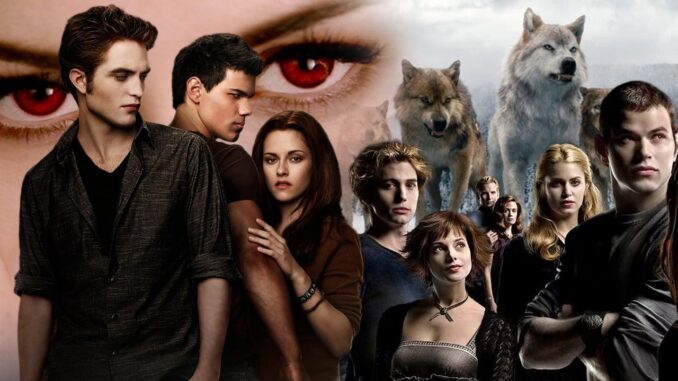
The Undying Spark: Why The Twilight Saga Still Captivates Fans After Two Decades
The year is 2005. MySpace reigns supreme, chunky highlights are in, and a quiet novel about a teenage girl falling in love with a vampire is about to explode onto the literary scene. Two decades later, Stephenie Meyer’s Twilight Saga continues to hold an undeniable grip on its fanbase, sparking debates, igniting memes, and drawing new readers into its fantastical world. While critics often dismissed it as poorly written and perpetuating unhealthy relationships, the saga’s enduring appeal lies in its masterful manipulation of timeless themes, its creation of a deeply immersive world, and its ability to tap into the primal desires for love, belonging, and transformation that resonate within us all.
One of the saga’s most potent strengths lies in its exploration of universal human desires. At its core, Twilight is a romance. Bella Swan, a seemingly ordinary teenager, finds herself unexpectedly at the center of a passionate and all-consuming love story. This intense, almost obsessive, connection with Edward Cullen is a heightened version of the yearning for complete acceptance and understanding that many experience during adolescence. The book captures the intoxicating feeling of being utterly captivated by another person, the belief that they are everything you never knew you were missing. This intoxicating blend of danger, forbidden love, and the promise of eternal devotion provides an escape from the mundane and offers a glimpse into a world where feelings are amplified and stakes are impossibly high. It’s a fantasy, certainly, but one that taps into a fundamental human craving for connection and profound romantic fulfillment.
Beyond the central romance, the Twilight Saga meticulously crafts a richly detailed and immersive world. Forks, Washington, with its perpetually overcast skies and lush, verdant landscapes, becomes a character in itself. The Cullen family, with their distinct personalities and supernatural abilities, are not simply vampires; they are a complex social unit with their own rules, history, and traditions. Meyer painstakingly details the vampires’ feeding habits, their physical limitations, and the rules governing their interaction with humans. This level of detail, however flawed it might be from a purely logical standpoint, allows readers to suspend disbelief and fully immerse themselves in the world. We learn the Cullens’ favorite hobbies, their preferred methods of hunting, and even the intricate dynamics of their family dynamic. This meticulous world-building creates a sense of belonging, allowing fans to feel like they are, in a small way, part of the Twilight universe.
Furthermore, the saga’s exploration of transformation and belonging resonates deeply with the coming-of-age audience it initially attracted and continues to attract. Bella’s journey is not simply about finding love; it’s about discovering her true self and finding her place in the world. From the moment she steps off the plane in Forks, she feels like an outsider, struggling to fit in. Her transformation into a vampire, while fraught with peril, represents her embracing her destiny and finally finding a community where she truly belongs. This narrative arc mirrors the anxieties and desires of many teenagers who are navigating the complexities of identity and searching for their tribe. Bella’s eventual acceptance into the Cullen family, a group of outcasts who have found solace and belonging in their shared secret, offers a powerful message of acceptance and self-discovery.
Of course, the Twilight Saga is not without its flaws. Its problematic power dynamics, its simplistic prose, and its often-criticized depiction of love have been thoroughly dissected and debated. However, to dismiss the saga solely based on these criticisms is to ignore its undeniable cultural impact and its continued ability to resonate with a large and dedicated fanbase. Ultimately, the undying spark of Twilight lies in its ability to transport readers to a fantastical world where love is all-consuming, transformation is possible, and belonging is found in the most unexpected of places. It offers an escape, a fantasy, and a powerful affirmation of the human desire for connection, forever etching its place in the landscape of popular culture. And perhaps, that’s why, two decades later, the Cullens’ world still beckons, inviting us to revisit the romance, the danger, and the undeniable allure of the eternal.
